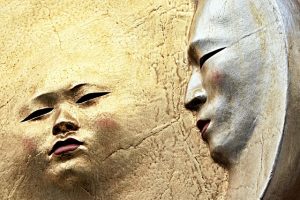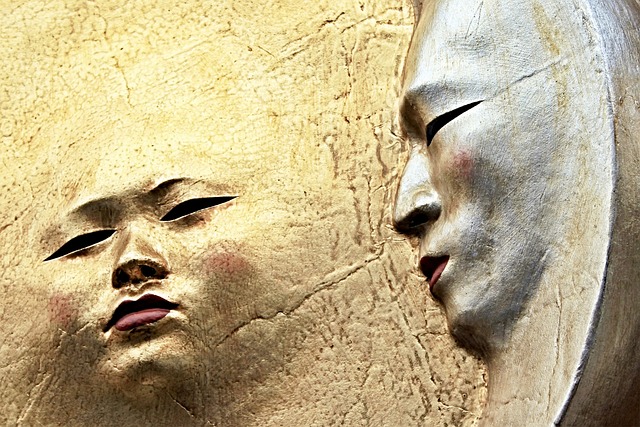In today’s fast-paced world, it’s easy to feel overwhelmed and stressed out. Many people turn to meditation and mindfulness practices to find inner peace, but there’s another ancient technique that can be just as effective: breathing. Ancient breathing techniques have been used for thousands of years to promote physical, mental, emotional, and spiritual well-being. By learning how to breathe properly, we can tap into our body’s natural relaxation response and achieve a sense of calm and tranquility.
Introduction to Ancient Breathing Techniques
 Ancient breathing techniques are a set of practices that involve controlling the breath in specific ways to achieve various benefits. There are many different types of ancient breathing techniques, including pranayama in yoga, qigong in Chinese medicine, and Tsa Lung in Tibetan Buddhism. These techniques all share the common goal of regulating the breath to promote health and well-being.
Ancient breathing techniques are a set of practices that involve controlling the breath in specific ways to achieve various benefits. There are many different types of ancient breathing techniques, including pranayama in yoga, qigong in Chinese medicine, and Tsa Lung in Tibetan Buddhism. These techniques all share the common goal of regulating the breath to promote health and well-being.
The way ancient breathing techniques work is by stimulating the parasympathetic nervous system, which is responsible for the body’s relaxation response. When we breathe deeply and slowly, our heart rate slows down, our blood pressure decreases, and our muscles relax. This triggers a cascade of physiological changes that help us feel more calm and centered.
Benefits of Ancient Breathing Techniques
There are many benefits to practicing ancient breathing techniques, including physical, mental, emotional, and spiritual benefits.
Physical benefits include improved lung function, increased oxygenation of the blood, reduced inflammation in the body, and improved immune function. Mental benefits include reduced stress and anxiety levels, improved focus and concentration, and increased feelings of well-being. Emotional benefits include increased self-awareness and self-regulation, improved mood and emotional stability, and increased resilience to stress. Spiritual benefits include a deeper connection to oneself and others, increased compassion and empathy, and a greater sense of purpose in life.
Exploring the History of Ancient Breathing Techniques
The origins of ancient breathing techniques can be traced back to ancient India, where pranayama was first developed as part of the yoga tradition. Over time, these techniques spread to other parts of the world, including China, Tibet, and Japan. Many historical figures have practiced ancient breathing techniques, including Buddha, who used breath meditation as a way to achieve enlightenment.
Over time, ancient breathing techniques have evolved and been adapted to different cultures and traditions. Today, there are many different types of ancient breathing techniques that are practiced around the world.
Uncovering the Secrets of Ancient Breathing Techniques
The science behind ancient breathing techniques is still being explored, but there is growing evidence to support their effectiveness. Studies have shown that deep breathing can reduce stress and anxiety levels, improve immune function, and even lower blood pressure. The way ancient breathing techniques affect the body and mind is by stimulating the relaxation response and reducing the activity of the sympathetic nervous system.
Breath plays a crucial role in achieving inner peace because it is intimately connected to our thoughts and emotions. By learning how to control our breath, we can learn how to control our thoughts and emotions as well.
Practicing Ancient Breathing Techniques
If you’re interested in practicing ancient breathing techniques, there are many resources available online and in-person. A simple way to get started is by practicing deep belly breathing for a few minutes each day. To do this, sit or lie down in a comfortable position and place one hand on your belly. Inhale deeply through your nose, feeling your belly expand as you breathe in. Exhale slowly through your mouth, feeling your belly contract as you breathe out.
Some tips for beginners include finding a quiet space where you won’t be disturbed, setting aside a regular time each day for practice, and starting with short sessions of just a few minutes at a time. Common mistakes to avoid include holding your breath or breathing too quickly, which can actually increase feelings of anxiety and stress.
Reaping the Rewards of Ancient Breathing Techniques
Many people have benefited from practicing ancient breathing techniques, including celebrities like Oprah Winfrey and Gisele Bundchen. Personal stories of transformation include reduced stress levels, improved sleep quality, and increased feelings of well-being. The long-term effects of practicing ancient breathing techniques can be profound, leading to a greater sense of inner peace and a deeper connection to oneself and others.
Unlocking the Path to Inner Peace with Ancient Breathing Techniques
The key to achieving inner peace with ancient breathing techniques is to make them a regular part of your daily routine. By incorporating deep breathing into your daily life, you can learn how to stay calm and centered even in the midst of chaos. The connection between breath and mindfulness is a powerful one, as both practices involve paying attention to the present moment without judgment.
Tips for incorporating ancient breathing techniques into daily life include taking deep breaths before stressful situations, practicing mindfulness while doing everyday activities like washing dishes or walking, and using guided meditations or apps to help you stay on track.
In conclusion, ancient breathing techniques are a powerful tool for achieving inner peace and well-being. By learning how to control our breath, we can tap into our body’s natural relaxation response and reduce feelings of stress and anxiety. The benefits of practicing ancient breathing techniques are many, including physical, mental, emotional, and spiritual benefits. If you’re interested in trying out these techniques for yourself, there are many resources available online and in-person to help you get started.








